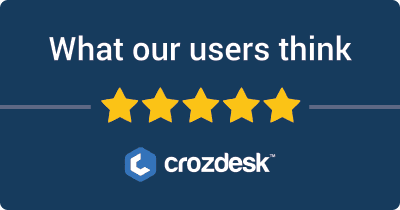
Top Woocommerce Alternatives & Competitors based on 533 Reviews
Reviews collected from
trustpilot.com
sitejabber.com
facebook.com
trustradius.com
gartner.com
capterra.com
softwareadvice.com
reviews.io
productreview.com.au
.
| Brand | Pricing |
|---|---|
|
★ ★ ☆ ☆ ☆ 1.9 |
WooCommerce is a free plugin for WordPress, but offers paid extensions and themes. Pricing mainly focuses on premium add-ons and hosting costs, varying based on features and hosting providers used. |
|
★ ★ ★ ★ ☆ 3.6 |
BigCommerce offers a tiered pricing model with four main plans: Standard ($29.95/month), Plus ($79.95/month), Pro ($299.95/month), and an Enterprise plan (custom pricing). Each level includes different features and transaction fees. |
|
★ ★ ★ ★ ★ 4.8 |
ClickFunnels has two primary plans: the Basic plan for $147/month and the Platinum plan for $197/month. Each plan offers a different number of funnels, pages, and features, with a focus on marketing functionalities. |
|
★ ☆ ☆ ☆ ☆ 1.1 |
Shopify offers several pricing plans: Basic ($39/month), Shopify ($105/month), Advanced ($399/month), and Shopify Plus (custom pricing). Each plan comes with various features for online selling, transaction fees, and reporting tools. |
|
★ ★ ★ ☆ ☆ 2.7 |
Squarespace has four pricing tiers: Personal ($16/month), Business ($23/month), Basic Commerce ($27/month), and Advanced Commerce ($49/month). Prices differ based on features like e-commerce capabilities and promotional tools. |
|
★ ★ ★ ☆ ☆ 2.6 |
Webflow offers a range of pricing plans starting from the Starter plan (free) to the Lite plan ($16/month), and ranging up to Professional ($35/month) and Team ($42/month) plans. Pricing varies based on development and hosting capabilities. |
|
★ ☆ ☆ ☆ ☆ 1 |
Weebly offers several tiers: Free, Personal ($6/month), Professional ($12/month), and Performance ($26/month), with each step increasing features for e-commerce and customization. |
|
★ ★ ★ ☆ ☆ 2.8 |
Wix provides various plans: Free, Combo ($16/month), Unlimited ($22/month), Pro ($27/month), VIP ($45/month), and Business plans for e-commerce. Pricing varies based on storage, bandwidth, and marketing tools. |
|
★ ★ ★ ☆ ☆ 2.8 |
WordPress.org is a free, open-source platform; however, it does incur costs for hosting, premium themes, and plugins, which vary based on service providers and options chosen. |
Compare your brand to your competitors
Why should you be looking for a Woocommerce alternative?
Users often seek alternatives to WooCommerce due to specific feature needs, user experience challenges, budget constraints, and varying support options. Platforms like BigCommerce, ClickFunnels, Shopify, Squarespace, Webflow, Weebly, Wix, and WordPress present compelling alternatives, each catering to different user requirements. BigCommerce targets larger businesses with robust tools, while ClickFunnels excels in sales funnels. Shopify offers user-friendly commerce solutions, Squarespace and Wix focus on design, and Webflow provides customizability, with Weebly appealing to budget-conscious users. Each option will be examined for features, pricing, and intended audiences.
Quick Overview of Top Woocommerce Competitors
-
BigCommerce – Best Woocommerce Competitor for Scalability
Offers a robust platform designed for growing businesses with built-in features for SEO, multi-channel selling, and no transaction fees. -
ClickFunnels – Top Woocommerce Alternative for Sales Funnels
Specializes in creating high-converting sales funnels with easy-to-use templates and tools for upsells, downsells, and automated marketing. -
Shopify – Most Popular Woocommerce Competitor for E-commerce
User-friendly interface with extensive app store, excellent customer support, and strong mobile responsiveness, making it ideal for online stores. -
Squarespace – Best Woocommerce Alternative for Design Aesthetics
Known for its beautiful, customizable templates, catering to creative businesses while offering integrated e-commerce functionalities. -
Webflow – Best Woocommerce Alternative for Customization and Flexibility
Provides powerful design capabilities with visual editing tools, allowing for highly tailored, code-free website builds and CMS functionalities. -
Weebly – Cheapest Woocommerce Competitor with E-commerce Options
Budget-friendly option with an intuitive drag-and-drop interface and essential e-commerce tools for small businesses and startups. -
Wix – User-Friendly Woocommerce Alternative for Beginners
Offers a simple drag-and-drop website builder with a variety of templates and e-commerce capabilities suited for non-technical users. -
WordPress – Most Versatile Woocommerce Competitor for Flexibility
Highly customizable through countless themes and plugins with strong community support; ideal for businesses that require more than just e-commerce.
Woocommerce Alternatives: Feature by Feature Comparison
| Platform | Key Features | Comparison to WooCommerce | Unique or Superior Aspects |
|---|---|---|---|
| BigCommerce | – Built-in SEO tools | WooCommerce requires plugins for comprehensive SEO management. | Advanced built-in SEO features help improve site visibility. |
| – Multi-channel selling (Amazon, eBay, Facebook) | WooCommerce supports basic integrations but lacks built-in multi-channel tools. | Seamless integration with several platforms for wider reach. | |
| – No transaction fees | WooCommerce charges fees through hosted accounts (if using payment gateways). | Users keep more of their earnings without added costs. | |
| – Advanced analytics and reporting | WooCommerce relies on third-party plugins for in-depth analytics. | Comprehensive reporting tools help track performance directly. | |
| – Responsive templates | WooCommerce themes can be less consistent in responsiveness. | Professionally designed templates ensure mobile optimization. | |
| ClickFunnels | – Sales funnel builder | WooCommerce lacks a dedicated funnel-building feature; users must use plugins. | Focused on conversion funnels helps maximize sales efforts. |
| – A/B testing for landing pages | A/B testing typically needs additional tools or plugins in WooCommerce. | Robust testing capabilities improve conversion rates. | |
| – Email marketing integration | WooCommerce requires separate plugins for email campaigns. | Built-in email marketing makes follow-up easier. | |
| – One-click upsell features | WooCommerce does not provide native upsell features; requires extensions. | Increase average order value effortlessly with upselling. | |
| Shopify | – App Store with 3,200+ apps | WooCommerce is extensible but may have compatibility issues. | Extensive third-party ecosystem offers tailored solutions. |
| – 24/7 support | WooCommerce support is mainly community-based unless paid. | Round-the-clock expert support available, enhancing reliability. | |
| – POS system available | WooCommerce has POS options but requires additional plugins. | Integrated POS for physical store sales. | |
| – Abandoned cart recovery | WooCommerce requires plugins for similar functionality. | Automated recovery increases chances of completing sales. | |
| Squarespace | – Stunning design options | WooCommerce themes are highly customizable but may require design skills. | Professionally curated templates ensure an aesthetically pleasing site. |
| – Image management tools | WooCommerce lacks comprehensive image management without plugins. | Built-in media libraries simplify managing visuals. | |
| – Built-in marketing tools | WooCommerce needs separate plugins for advanced marketing. | Integrated tools help with email campaigns, SEO, and social sharing. | |
| – Member area functionality | WooCommerce requires plugins for similar functions. | Built-in membership site features streamline user access. | |
| Webflow | – Visual website builder | WooCommerce requires more technical knowledge to set up products. | User-friendly design tools allow for custom site creation easily. |
| – Custom code access | WooCommerce requires theme or plugin tweaking for custom features. | More control for developers to implement unique features seamlessly. | |
| – Advanced animations and interactions | WooCommerce is less flexible in visual design terms. | Richer user experience due to the ability to create dynamic elements. | |
| – Built-in content management | WooCommerce primarily focuses on eCommerce, requiring additional tools. | Better handling of diverse content types alongside eCommerce. | |
| Weebly | – Drag-and-drop interface | WooCommerce requires knowledge of WordPress and WooCommerce plugins. | Easier site creation for beginners with a user-friendly interface. |
| – Integrated marketing tools | WooCommerce needs plugins for email, SEO, and marketing. | All-in-one solution for basic marketing needs meets user needs easily. | |
| – Mobile-responsive themes | WooCommerce themes can have varied mobile compatibility. | Ensured mobile compatibility across templates aids user accessibility. | |
| – Built-in eCommerce features | WooCommerce has extensive features but comes at a setup cost. | User-friendly eCommerce tools for straightforward online sales. | |
| Wix | – Extensive template library | WooCommerce templates may require more customization and technical effort. | Offers a wide variety of industry-specific templates. |
| – ADI (Artificial Design Intelligence) | WooCommerce does not have such automated design features. | Simplifies the design process for creating visually appealing sites. | |
| – Integrated apps marketplace | WooCommerce has plugins but requires compatibility checks. | Easy integration with a variety of apps for added functionalities. | |
| – Built-in analytics | WooCommerce relies on third-party plugins for detailed analytics. | Inbuilt analytics provide straightforward insights without extras. | |
| WordPress | – Open-source flexibility | WooCommerce is a plugin for WordPress, inheriting its strengths and weaknesses. | Vast customization options available; a wide community for support. |
| – Extensive community support | WooCommerce has community support but lacks dedicated resources. | Larger network helps users find solutions faster and easier. | |
| – Diverse plugin ecosystem | WooCommerce offers many extensions, but they can cause compatibility issues. | Flexibility to build diverse site functions with numerous plugins. | |
| – Better blogging capabilities | WooCommerce is more focused on eCommerce aspects. | Robust blogging features allow for content marketing alongside eCommerce. |
Compare your brand to your competitors
Integration Capabilities for each Woocommerce competitor
| Alternative | Supported Integrations | Compatibility Notes |
|---|---|---|
| BigCommerce | – Mailchimp – QuickBooks – PayPal – Stripe – Google Analytics – Xero – ShipStation – Facebook & Instagram |
Excellent for eCommerce; strong support for accounting and marketing tools. |
| ClickFunnels | – Mailchimp – Aweber – ActiveCampaign – Kajabi – WebinarJam – Zapier |
Primarily focused on sales funnels; integrates well with marketing platforms. |
| Shopify | – Mailchimp – Quickbooks – USPS – Stripe – Facebook & Instagram – Klaviyo – Zendesk |
Extensive app store; covers various eCommerce needs including marketing and shipping tools. |
| Squarespace | – Mailchimp – Google Analytics – OpenTable – Spotify – Acuity Scheduling |
Best for visually appealing sites; integrates with creative tools effectively. |
| Webflow | – Zapier – Mailchimp – Google Analytics – Typeform – Airtable |
Focused on design and development; good for small businesses needing creative control. |
| Weebly | – Mailchimp – Google Analytics – Square – Stripe |
Limited integrations; mainly geared towards small business and eCommerce. |
| Wix | – Google Analytics – Mailchimp – QuickBooks |
Strong marketing integrations; user-friendly for small businesses and creatives. |
| WordPress | – WooCommerce – Mailchimp – Yoast SEO – Google Analytics – Zapier – Stripe – PayPal |
Highly flexible; vast plugin ecosystem easily integrates with marketing and eCommerce tools. |
| WooCommerce | – Mailchimp – QuickBooks – Stripe – PayPal – Google Analytics – ShipStation – Zapier |
Native eCommerce solution for WordPress; excels in integrating with various eCommerce and marketing tools. |
Pros and Cons of each Woocommerce Alternative
Here’s a comparison table of primary pros and cons for each alternative compared to WooCommerce:
| Alternative | Pros | Cons |
|---|---|---|
| BigCommerce | – Built-in features for SEO and analytics – No transaction fees – More scalable for large catalogs |
– Less flexibility in design compared to WooCommerce – Higher base pricing for advanced features |
| ClickFunnels | – Optimized for sales funnels and conversions – User-friendly interface for non-tech users |
– Not primarily for e-commerce; more limited in product management – Higher costs for full features |
| Shopify | – Intuitive user interface – Extensive app marketplace and integrations – 24/7 customer support |
– Monthly fees can add up – Less control over technical elements compared to WooCommerce |
| Squarespace | – Visually stunning templates – Integrated marketing tools (email, SEO) |
– Limited payment gateways – Less flexibility for large-scale or complex e-commerce setups |
| Webflow | – Customizable designs without coding – Full control over CSS and HTML |
– Steeper learning curve for beginners – E-commerce features not as robust as WooCommerce |
| Weebly | – Easy to use with drag-and-drop interface – Affordable pricing |
– Less flexibility with e-commerce features – Limited app ecosystem compared to WooCommerce |
| Wix | – User-friendly and visually appealing templates – Wide range of apps |
– Less scalable for larger stores – Can be difficult to migrate away from |
| WordPress | – Highly customizable and flexible – Extensive plugin ecosystem |
– Requires more management and maintenance – Learning curve for new users compared to hosted solutions |
This table outlines each alternative’s strengths and weaknesses compared to WooCommerce, focusing on aspects that are relevant to typical use cases.
Woocommerce vs Competitors: Traffic & Marketing Comparison
Traffic Comparison:
Shopify leads in organic traffic with over 131 million visits, followed closely by BigCommerce and Weebly, which also attract significant traffic with around 15 and 53 million visits, respectively. WooCommerce’s traffic showcases volatility with peaks over 79 million but has significantly dropped to fewer than 4 million recently. In contrast, ClickFunnels has the lowest overall organic traffic, fluctuating between 186,000 and 435,000 visits, indicating its niche focus. Overall, Shopify is the dominant player, significantly ahead of its competitors.
Top Performing Keywords:
Each brand has a diverse set of high-ranking keywords. WooCommerce ranks highly for "e commerce business" (1) and "e commerce platform" (1), indicating a strong focus on e-commerce solutions. BigCommerce excels with keywords like "best ecommerce platform" (1) and "ecommerce software" (1). Shopify’s strength lies in strong rankings across several “shopify” keywords (1), positioning itself strongly within its brand. ClickFunnels dominates lead generation terms, showcasing a unique strategy targeting marketing professionals.
Conclusions on Visibility and Reach:
Shopify possesses the strongest online visibility with robust traffic and numerous high-ranking keywords across e-commerce-related queries. BigCommerce and Weebly also demonstrate strong visibility, with several top-ranking keywords contributing to substantial traffic. WooCommerce’s volatility indicates potential challenges in maintaining consistent visibility. ClickFunnels excels in niche marketing keywords but lacks overall reach. In summary, Shopify clearly stands out in e-commerce with its extensive visibility and market penetration, while ClickFunnels serves a more specialized audience.
Compare your brand to your competitors
Other “Woocommerce” Alternatives & Competitors that you can find for free
Here are five alternatives and competitors to WooCommerce along with their key features, strengths, and value propositions:
-
Magento (Adobe Commerce)
- Key Features: Open-source platform, extensive customization options, advanced SEO capabilities, multi-store functionality, and a robust extension marketplace.
- Strengths: Highly scalable and suitable for large businesses; offers deep integration with Adobe’s ecosystem.
- Value Proposition: Ideal for enterprises requiring a complex and customizable eCommerce solution with scalability.
-
PrestaShop
- Key Features: Open-source, customizable themes, multi-language support, a strong community for support, various analytics tools, and thousands of add-ons.
- Strengths: Cost-effective for smaller retailers while still offering comprehensive features, active community support.
- Value Proposition: Offers flexibility for merchants looking to build a tailored online shopping experience without substantial upfront costs.
-
Shopware
- Key Features: User-friendly interface, customizable storefronts, multi-channel selling, responsive design, and rich content features (like storytelling).
- Strengths: Strong focus on user experience and merchant support with a growing ecosystem of plugins.
- Value Proposition: Designed for those looking to create a visually stunning and highly functional online store while emphasizing user engagement.
-
OpenCart
- Key Features: Extensive library of extensions, multi-language and multi-currency support, easy setup, and a user-friendly admin interface.
- Strengths: Low-cost solution for startups and small businesses with straightforward functionality.
- Value Proposition: Cost-effective and flexible for small to medium businesses seeking an easy-to-manage eCommerce platform.
-
Zen Cart
- Key Features: Open-source platform, customizable templates, comprehensive product management, SEO-friendly features, and community support.
- Strengths: High flexibility for customization and strong support network from an active community.
- Value Proposition: Suitable for businesses wanting an affordable and customizable platform without high technical requirements, backed by community-driven support.


